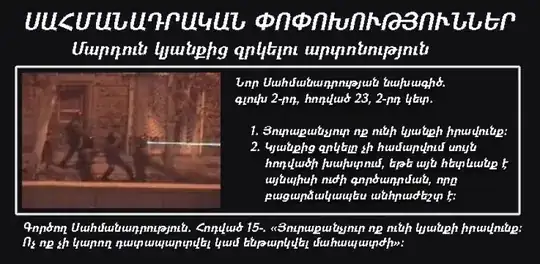Article 24 Chapter 2 of the 1995 Armenian Constitution states:
Everyone shall have a right to life. No one shall be condemned to the death penalty or executed.
Chapters 8 and 9 discuss adoption and amendment of their Constitution. Similar to other national constitutions, amendments or replacements occur via an official process that includes public notice and voting.
The USA Library of Congress has this notice about proposed Amendments to the Armenian Constitution from 2014. It mentions various legal details but nothing as significant as eliminating the right to life or allowing the death penalty.
Among the key innovations proposed by the draft Concept are:
conducting elections for the President and National Assembly (Parliament) on the same day;
transforming the current national political system into a parliamentarian form of government, with the President as the head of state elected by the Parliament from a list of non-partisan candidates, for a term of seven years without the possibility of reelection;
having the Prime Minister assume his position based on the outcome of parliamentary elections;
remaking the current three-level judiciary system into a two-level system and introducing courts with jurors; and
giving the Constitutional Court the authority to decide on jurisdictional issues that arise among different government agencies. (Id. at 27.)
I have no idea what the graphic in the original post depicts (are those armed men? is that a weapon being fired? a flashlight amplified by night vision? or just a white line?). Dropping it into Google image search yielded some news articles, including this one about a clash between police and protestors that could be translated to English with Google Translate.
The picture and text does not suggest itself to be an official source of knowledge on the Armenian Constitution but rather a commentary or protest of some sort.
